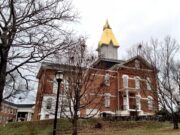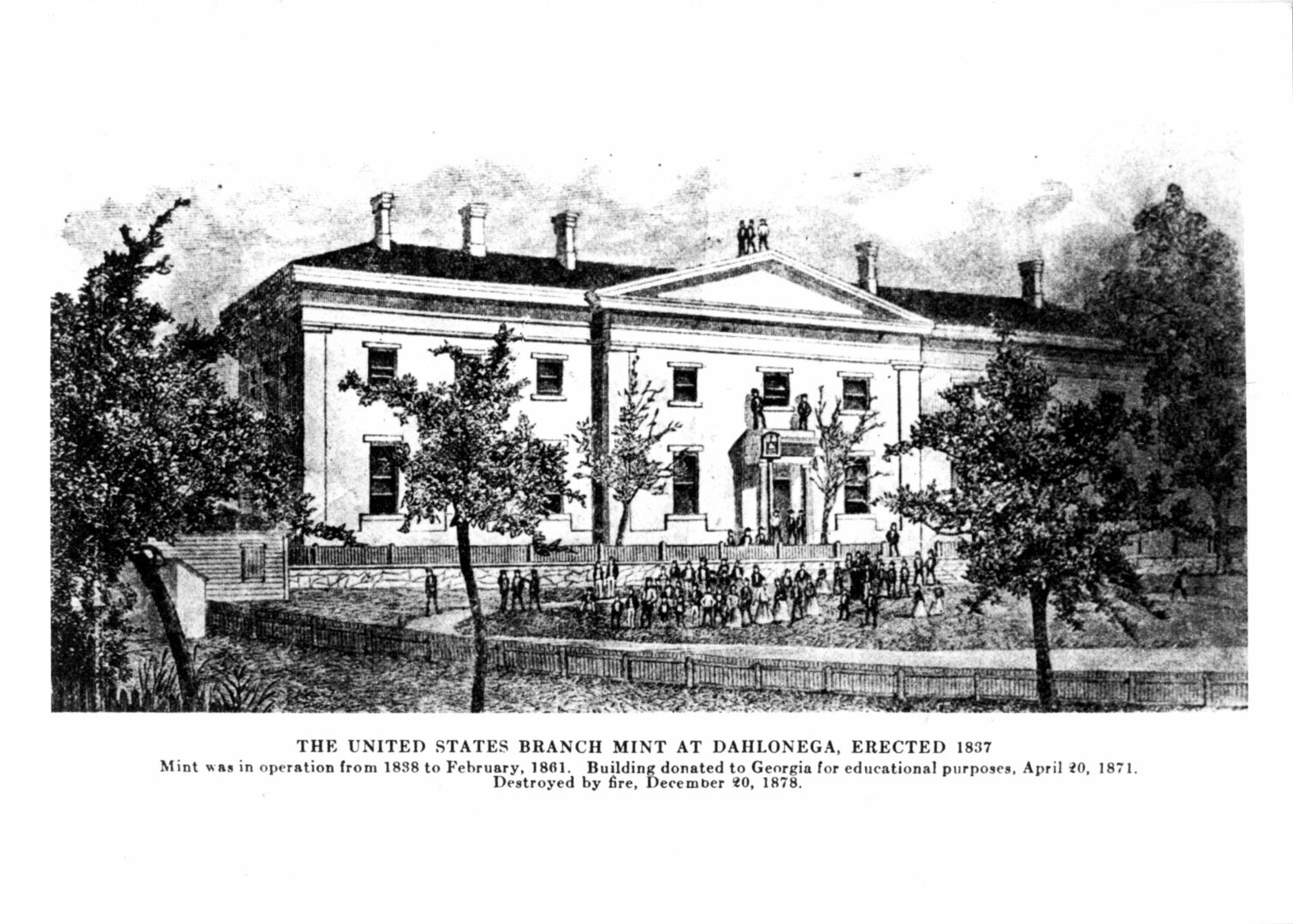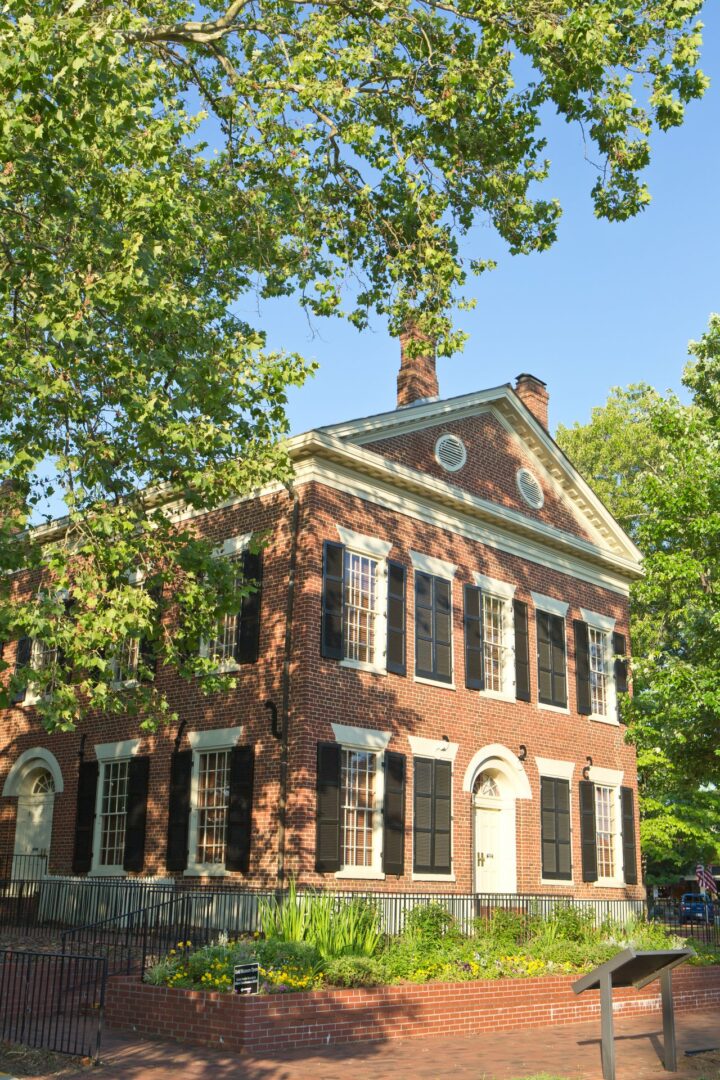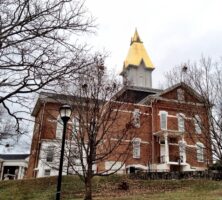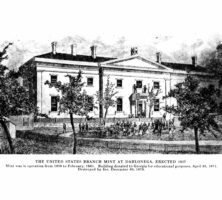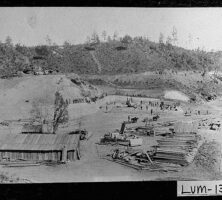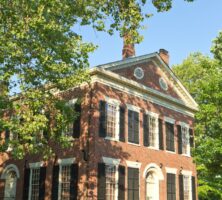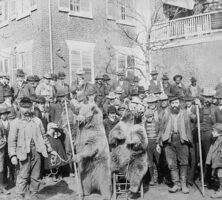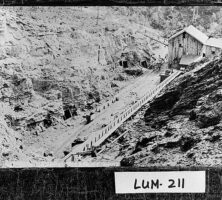Dahlonega, the seat of Lumpkin County, lies about sixty-five miles north of Atlanta in the Blue Ridge province. The town is closely associated with Georgia’s gold history; its name derives from a Cherokee word referring to the yellow color of gold.
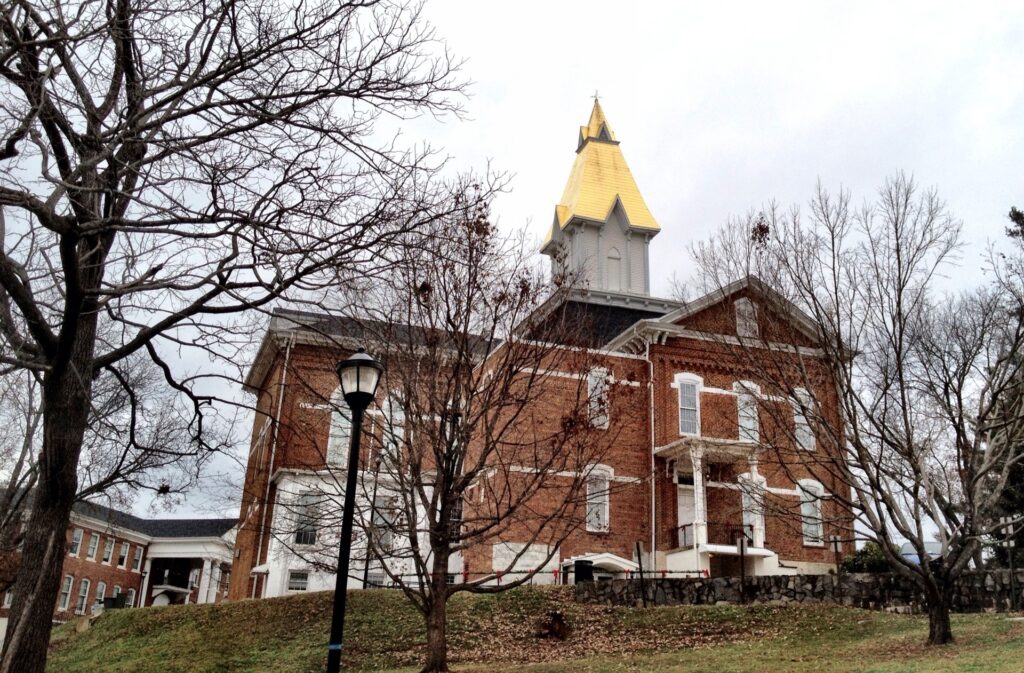
The Dahlonega area was part of the Cherokee Nation when European settlers first arrived. After the 1828-29 discovery of gold, thousands of miners—known as “Twenty-Niners”—poured into the area, and the Georgia gold rush began. Beginning in 1832, Cherokee territory in Lumpkin County, as well as in several other counties in north Georgia, was sold by the state to Georgia residents through a land lottery. A separate lottery was held in 1832 to distribute forty-acre “gold districts” for $10 each in the same Cherokee area. The discovery of gold was one of the major reasons behind Cherokee Removal, in which the state of Georgia expelled Cherokees from their ancestral lands in 1838.
Formally established in 1833, Dahlonega replaced Auraria as the Lumpkin County seat. The boomtown served the miners’ needs but was initially rough and lawless. Miners were a diverse lot, hailing from around the nation and from Europe. Some were enslaved workers (as at Calhoun Mine), but there were also free Black laborers, including “Free Jim” Bosclair, who achieved great wealth as a miner and merchant. A few miners were women, and some were farmers supplementing their incomes with gold.
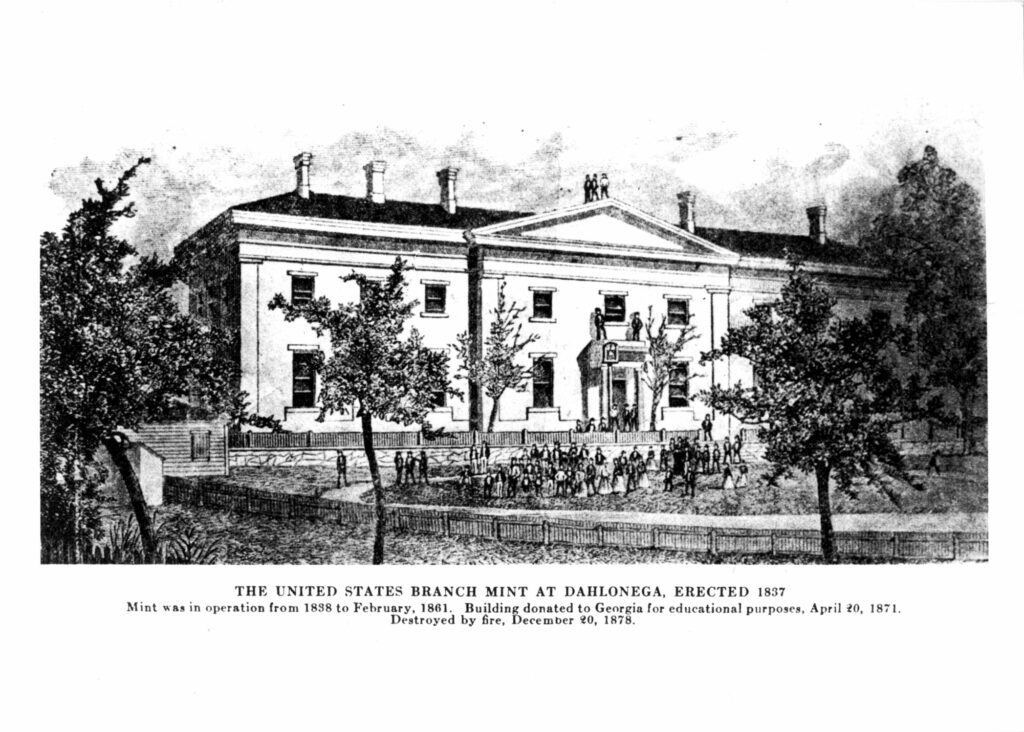
So much gold was extracted that the U.S. Congress chartered a Branch Mint at Dahlonega in 1835, which produced $6 million worth of gold coins before closing in 1861. Mint assayer Matthew Stephenson’s famous speech asked miners to stay in Georgia: “Why go to California? In that ridge lies more gold than man ever dreamt of. There’s millions in it!” The miners went to California anyway, where they conveyed his colorful expression to writer Mark Twain, who adopted it for his literary character Mulberry Sellers in The American Claimant (1892).
By the mid-nineteenth century, Dahlonega faced difficulties with lowered gold production and disruptions during the Civil War (1861-65). During the war, nine military companies were organized at the Dahlonega Mustering Grounds. The Confederate government seized the mint but made little use of it, and it never reopened. In 1871 the former mint facility became North Georgia Agricultural College (later North Georgia College and State University), thanks to the efforts of U.S. congressman William Pierce Price. When the old mint building burned in 1878, a new administration building was erected on the old foundations, and the school continued to grow.
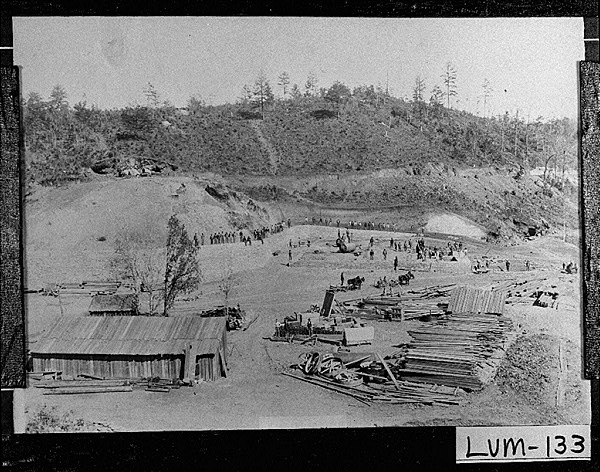
At the end of the nineteenth century, Dahlonega experienced a new wave of gold interest, and the population reached 1,255 by 1900. Several companies set up new facilities, including the Dahlonega Consolidated Gold Mining Company, the largest gold-processing plant east of the Mississippi River, with a four-story mill and 120 stamps. But by 1906 most of the new plants had closed, at a great loss to their investors. The population dropped to just 690 by 1920.
Dahlonega suffered the effects of the Great Depression, but the population began to rebound, climbing above 1,000 again during the 1930s, above 2,000 during the 1940s, and to 3,638 residents by 2000. Efforts to attract tourism and other business during the 1950s produced a more diverse economy. In 1958 Dahlonegans proudly transported local gold by mule-drawn wagon train to Atlanta for installation on the state capitol dome.
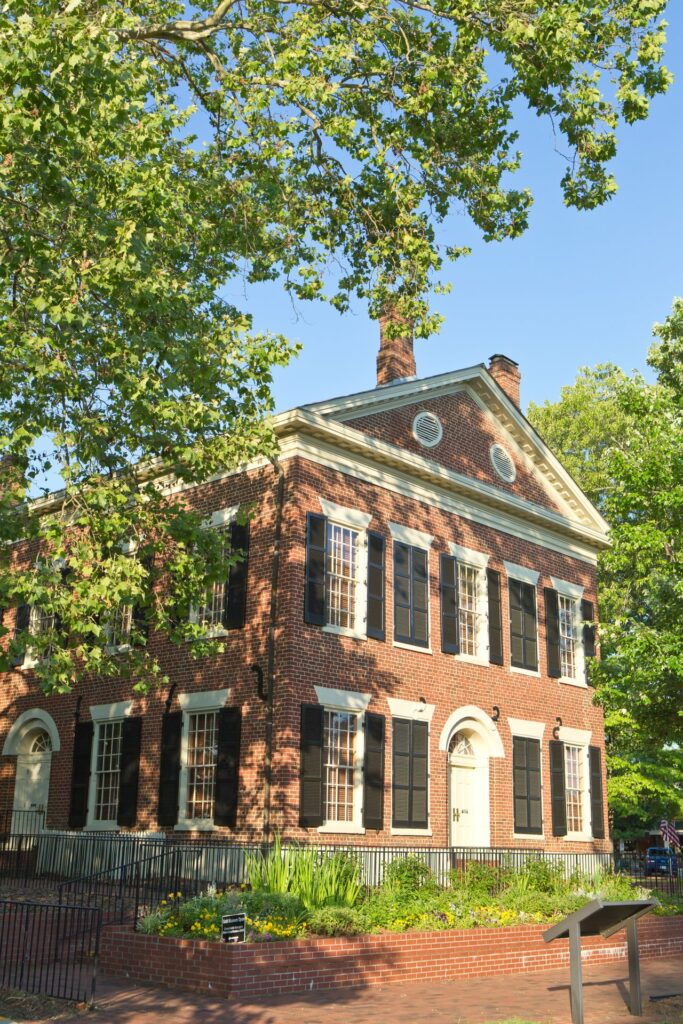
Gold-related tourism has proved very successful. Visitors to Dahlonega experience its gold history and enjoy festivals, accommodations, dining, and shopping. The original 1836 Lumpkin County Courthouse has been restored and now houses the Dahlonega Gold Museum. The Crisson Mine and reopened Dahlonega Consolidated Mine offer tours and gold panning. Dahlonega also benefits from extensive tourism related to the natural features of its beautiful mountain setting.
One of the largest local employers, North Georgia College and State University, with a student body of about 4,500, plays a major role in the Dahlonega community.
Agriculture has always been an important economic activity in Dahlonega. The poultry industry, introduced locally in the 1940s, dominates today, but there are also strong beef cattle, wine-making, and greenhouse industries. Transportation improvements were also important. Despite nineteenth-century attempts to bring the railroad to Dahlonega from Gainesville, tracks never reached the city. Road access to the remote mountainous location was historically difficult, but the completion of Georgia 400 by the 1990s improved access to Atlanta.
With enhanced access to Atlanta’s growing metropolis, and an ongoing interest in its own gold heritage, Dahlonega’s future growth seems assured.


